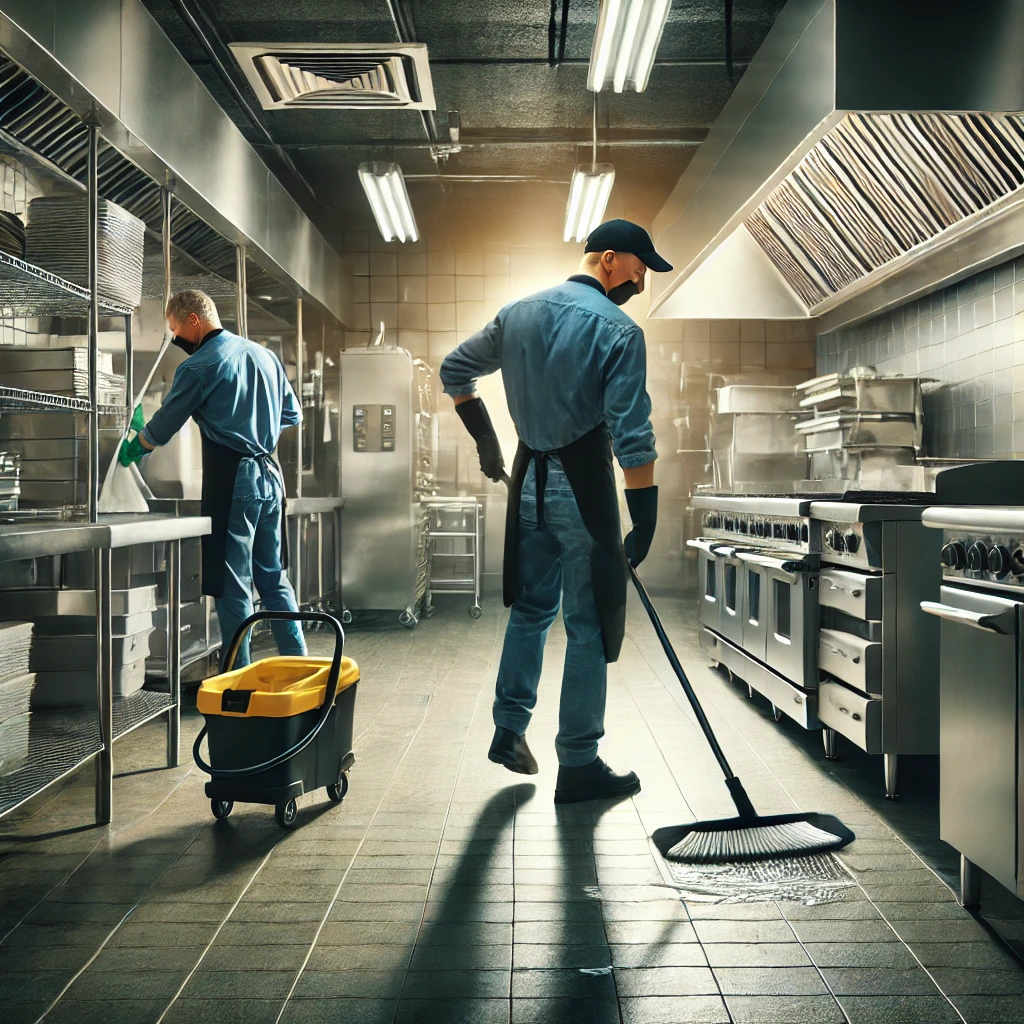Maintaining a clean environment in commercial kitchens is non-negotiable for food safety and operational efficiency. Clean kitchens help prevent contamination, ensure compliance with health regulations, and promote a safe workspace. Below are key elements for effective commercial kitchen cleaning, with a focus on why these steps are indispensable.
1. Surface Sanitation
Surfaces in a kitchen, from countertops to stovetops, are constantly exposed to food debris and bacteria. Regular cleaning and sanitizing of all surfaces help in reducing bacterial growth and cross-contamination risks. Using high-quality disinfectants that meet health standards is essential for hygiene, as these solutions effectively remove germs and prevent build-up.
2. Equipment and Appliance Cleaning
Kitchens are filled with appliances that need routine cleaning to function correctly. Ovens, grills, fryers, and refrigerators must be cleaned thoroughly to maintain their efficiency. Grease and residue build-up can cause these appliances to overheat or break down, disrupting kitchen operations and compromising food safety. Regular deep cleaning of these units enhances longevity and safety, keeping your kitchen running smoothly.
3. Floor and Ventilation Hygiene
Floors in commercial kitchens get oily and slippery, leading to potential slip hazards. Cleaning floors with degreasers reduces this risk and keeps the kitchen compliant with safety regulations. Similarly, ventilation systems accumulate grease, which can become a fire hazard if not cleaned regularly. Properly maintained ventilation also improves air quality, making the kitchen a healthier place to work.
4. Waste Management and Pest Control
Unmanaged waste attracts pests and is a significant hygiene issue. Proper waste management involves regular removal of garbage, cleaning waste bins, and monitoring areas prone to pest infestations. Pests bring harmful bacteria, which can contaminate food surfaces. An effective cleaning protocol includes pest control measures, as well as regular waste disposal practices.
5. Frequent Employee Training on Hygiene Protocols
Employees need to be educated on hygiene standards, proper cleaning techniques, and best practices for preventing contamination. Training reinforces the importance of clean habits, such as wiping down surfaces after use and storing cleaning supplies properly. A team well-versed in cleaning protocols supports food safety efforts significantly.
For more insights on the best practices in cleaning commercial kitchens, maintaining hygiene is key to avoiding risks and ensuring your kitchen remains compliant with health regulations. Keeping these practices in place ensures a cleaner, safer environment for food preparation and handling.

